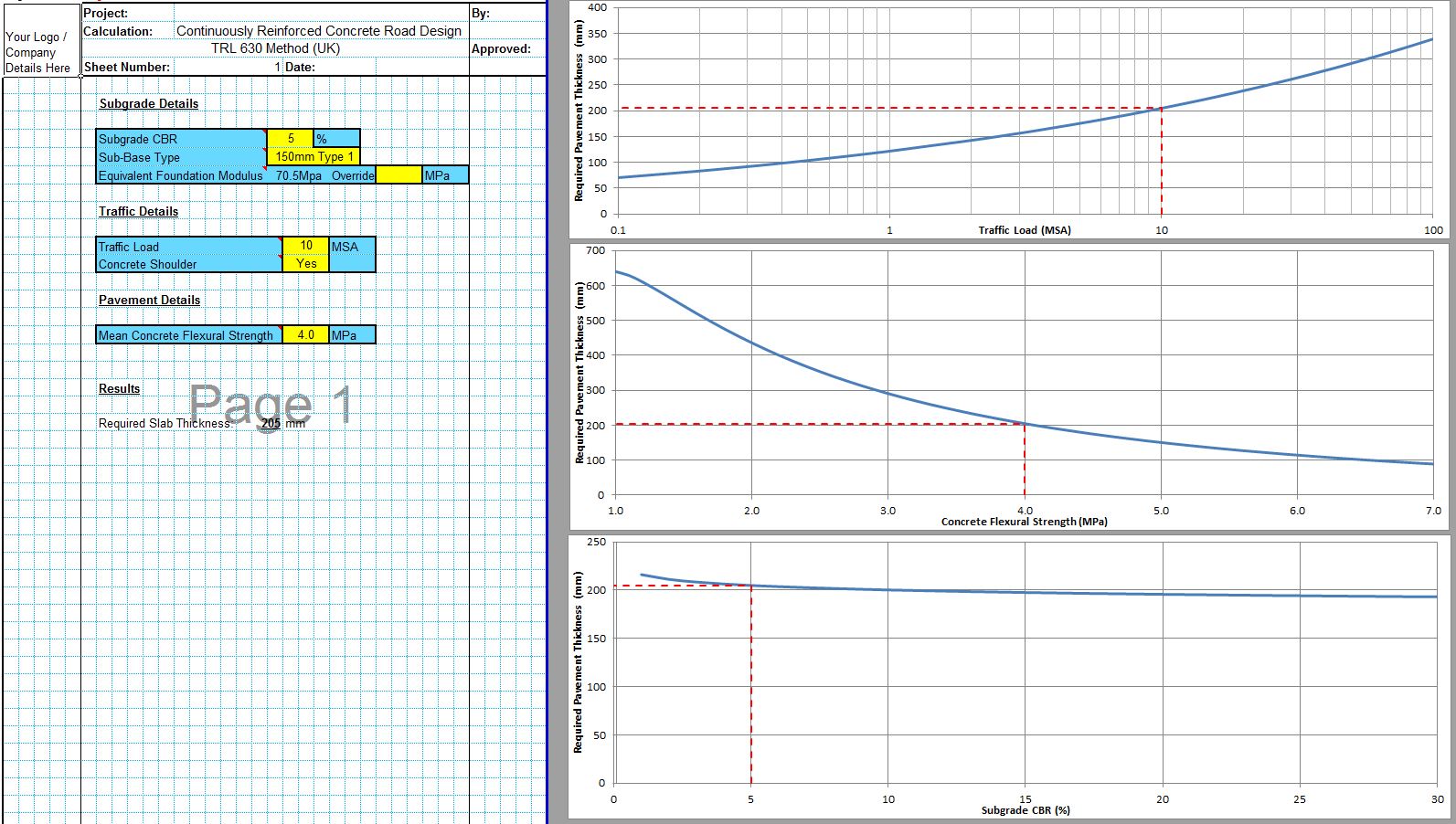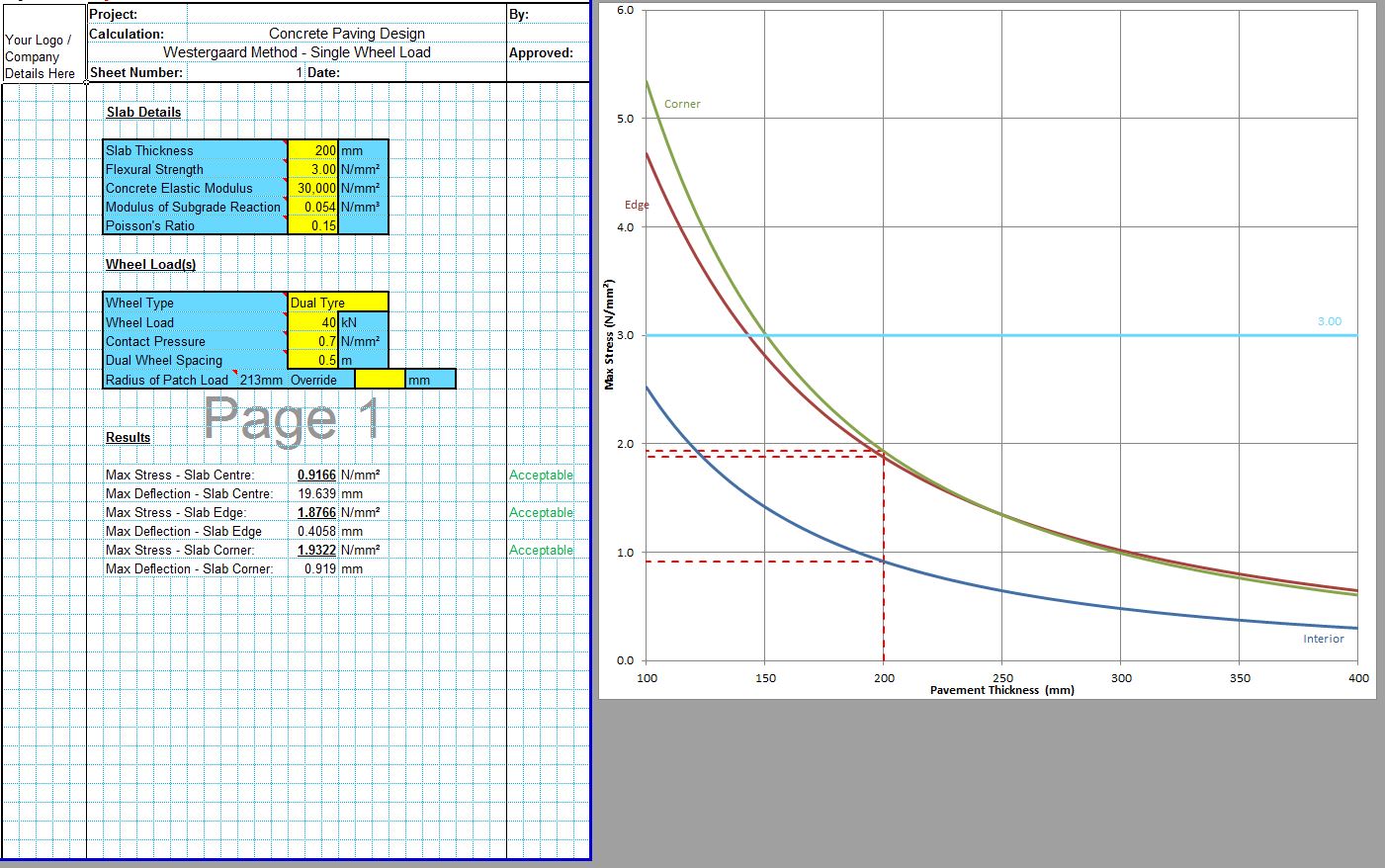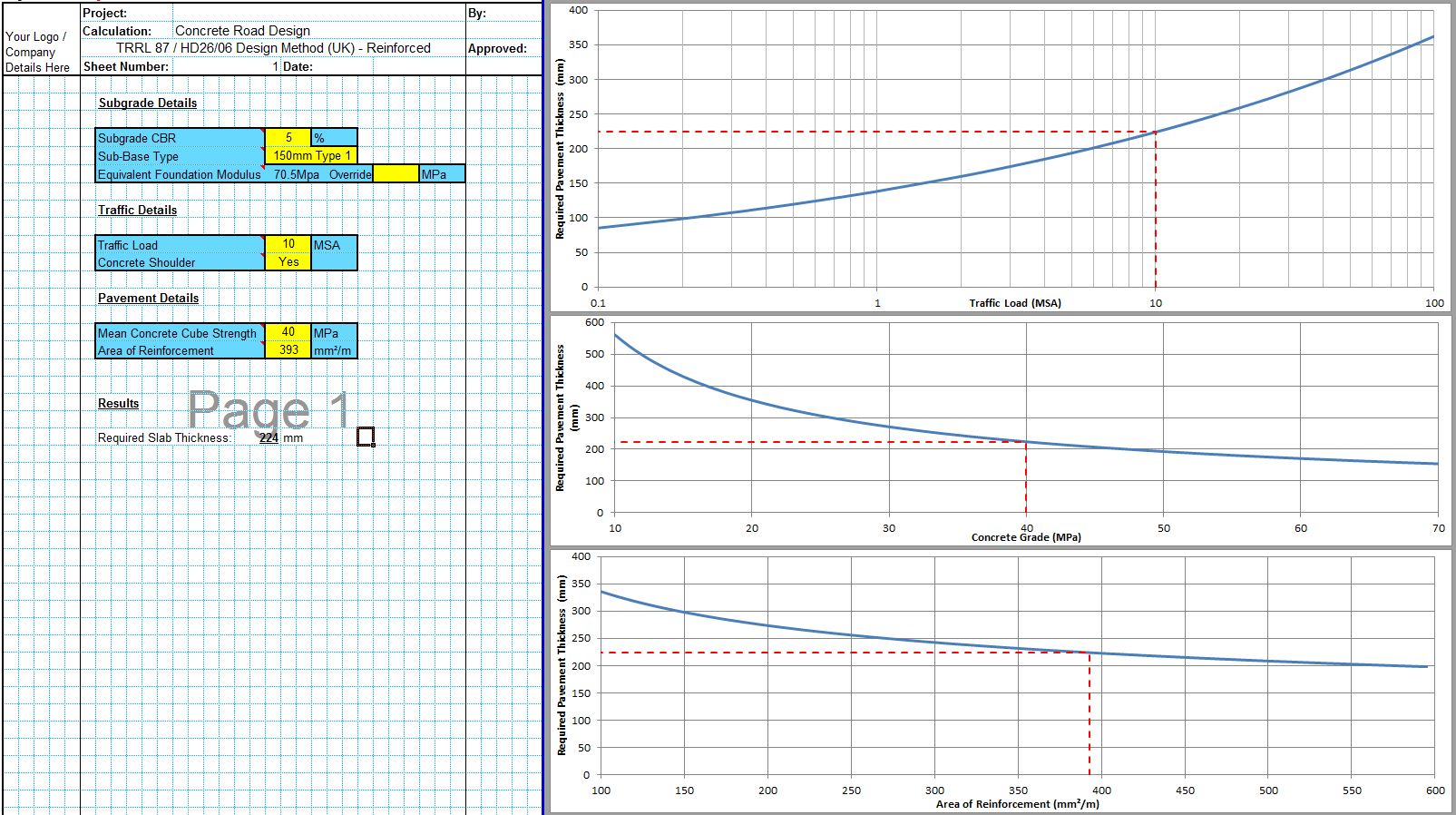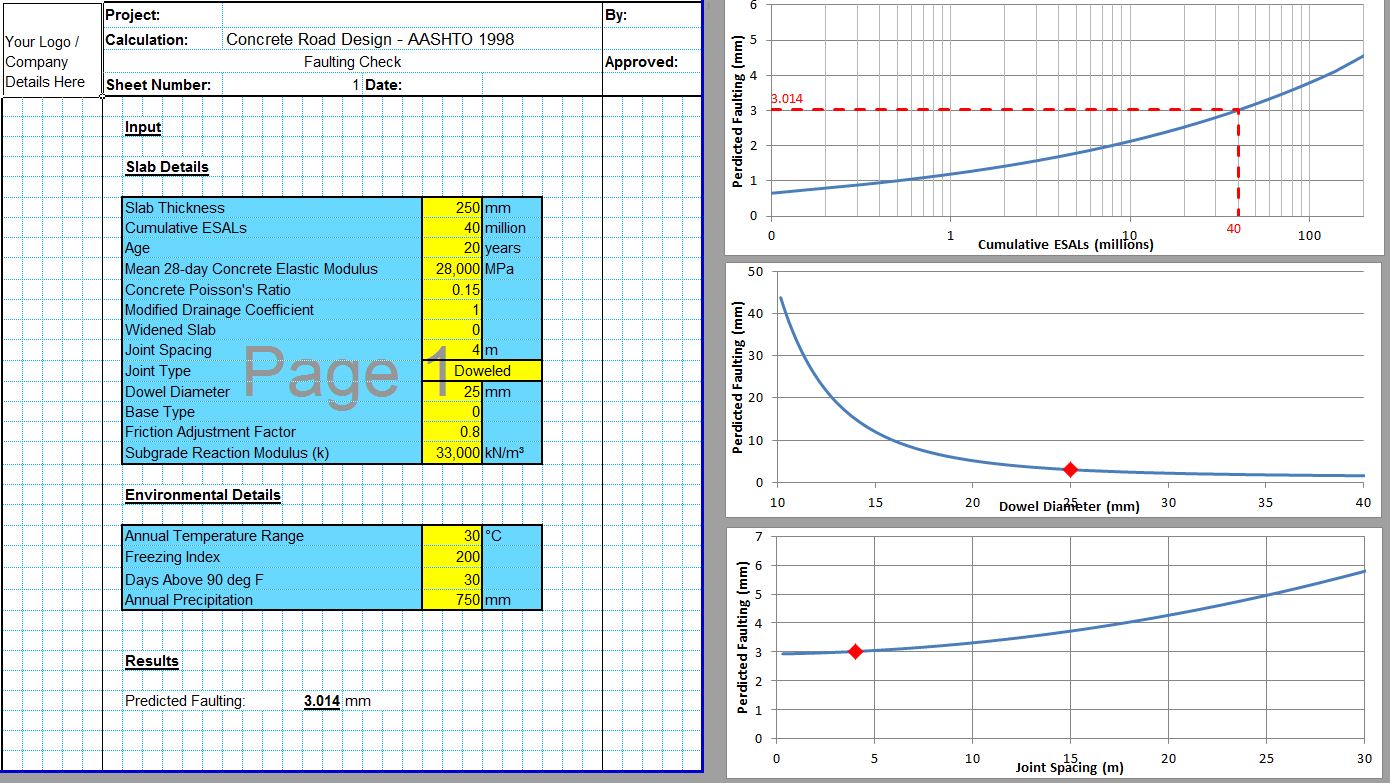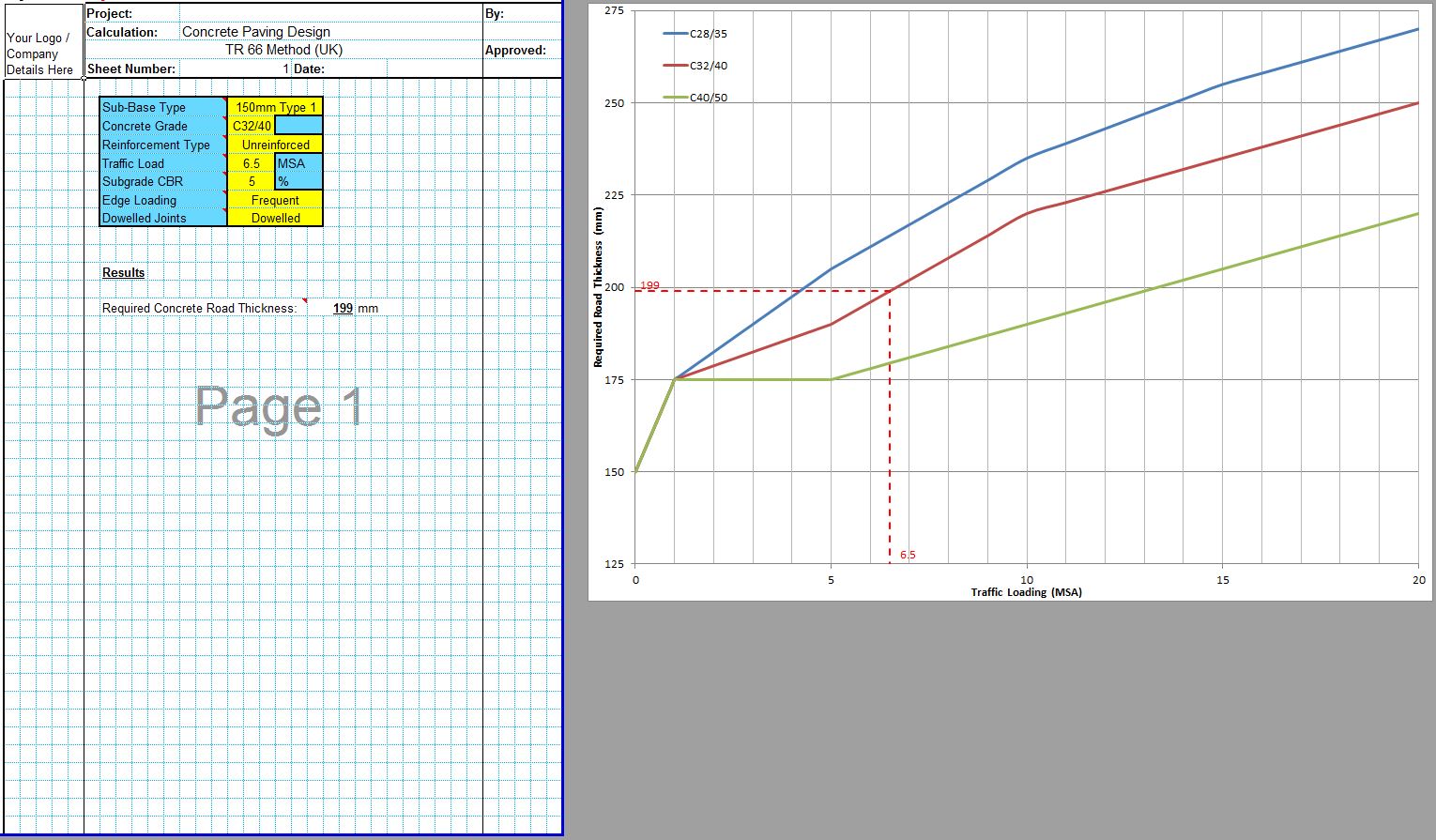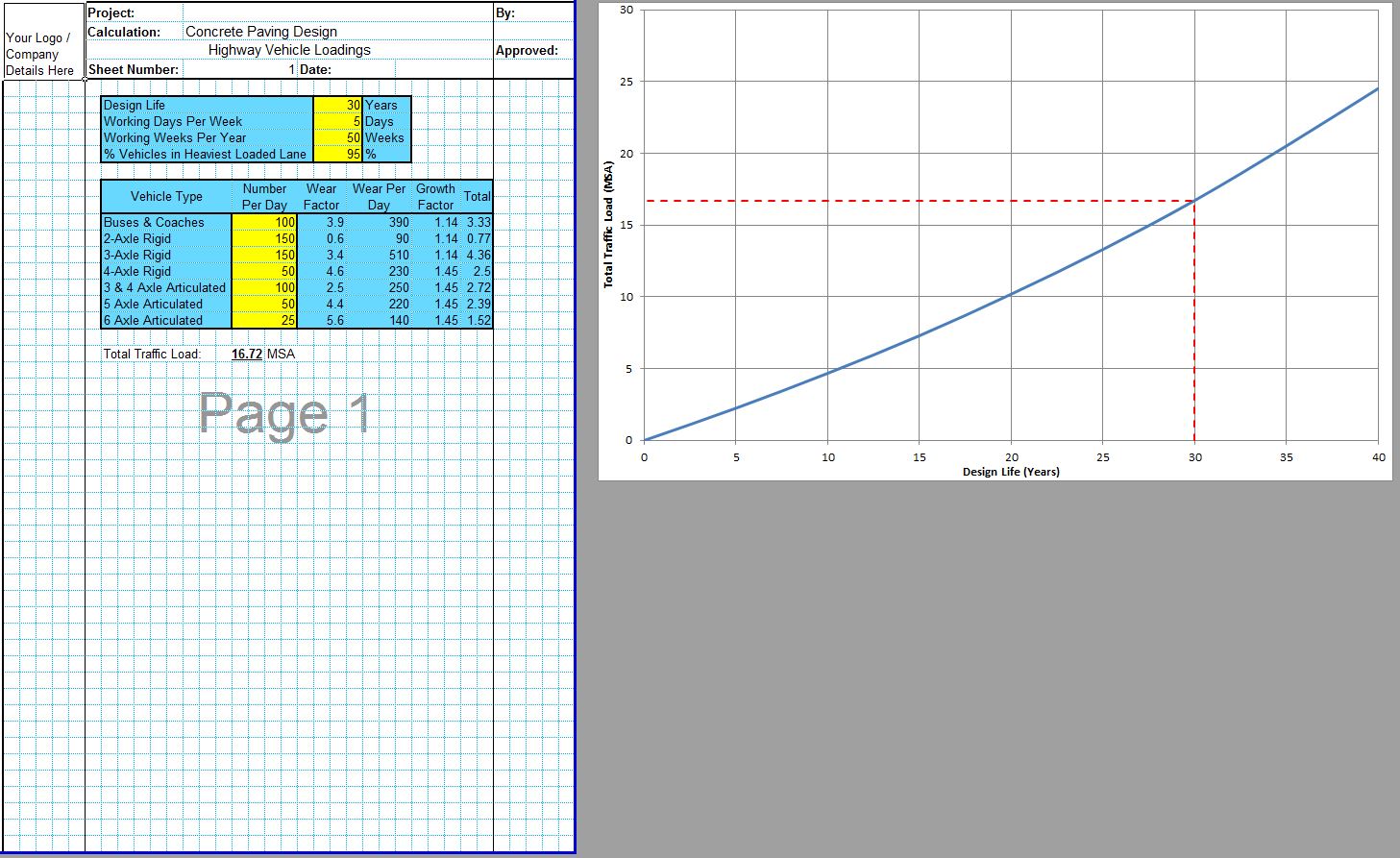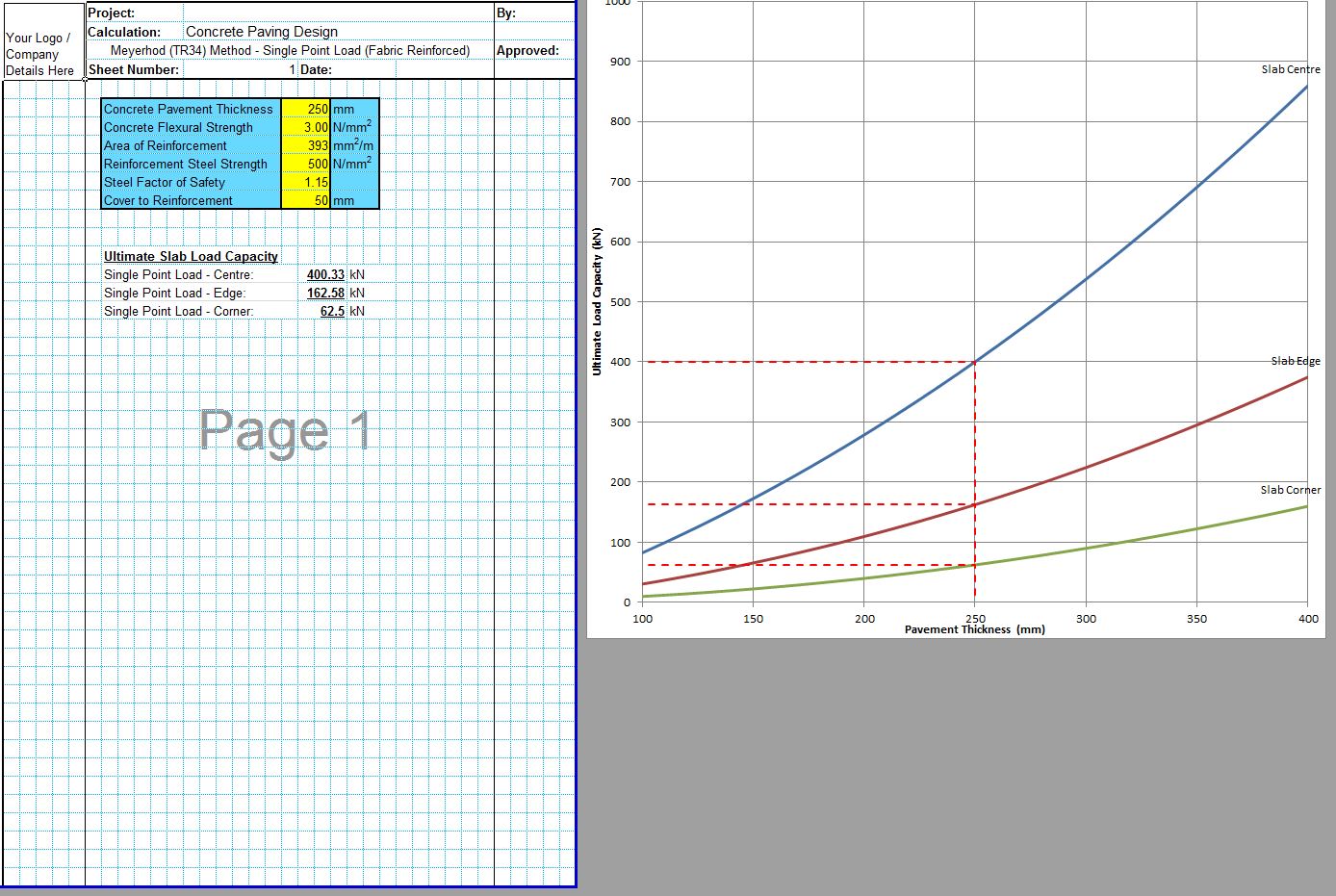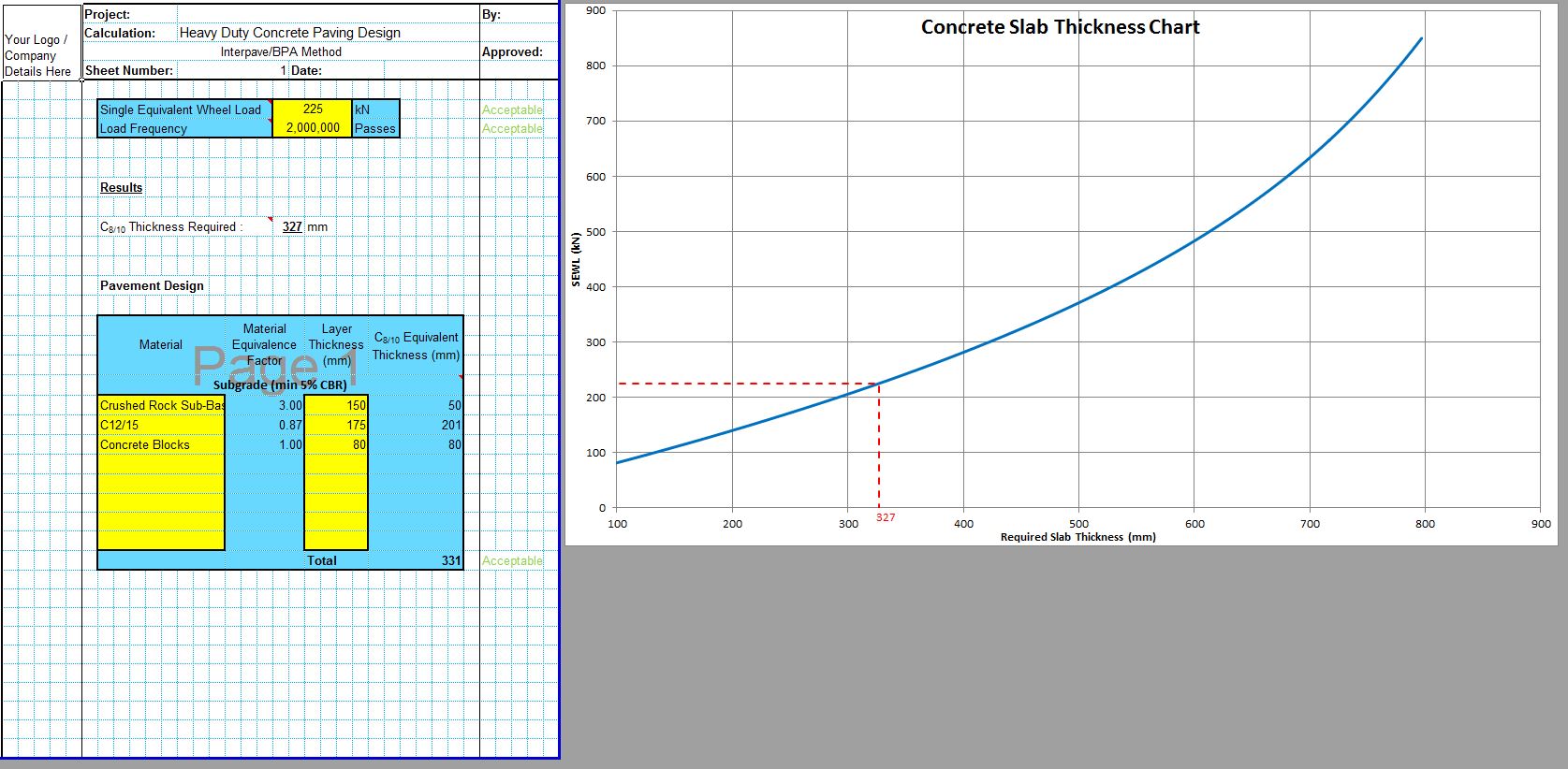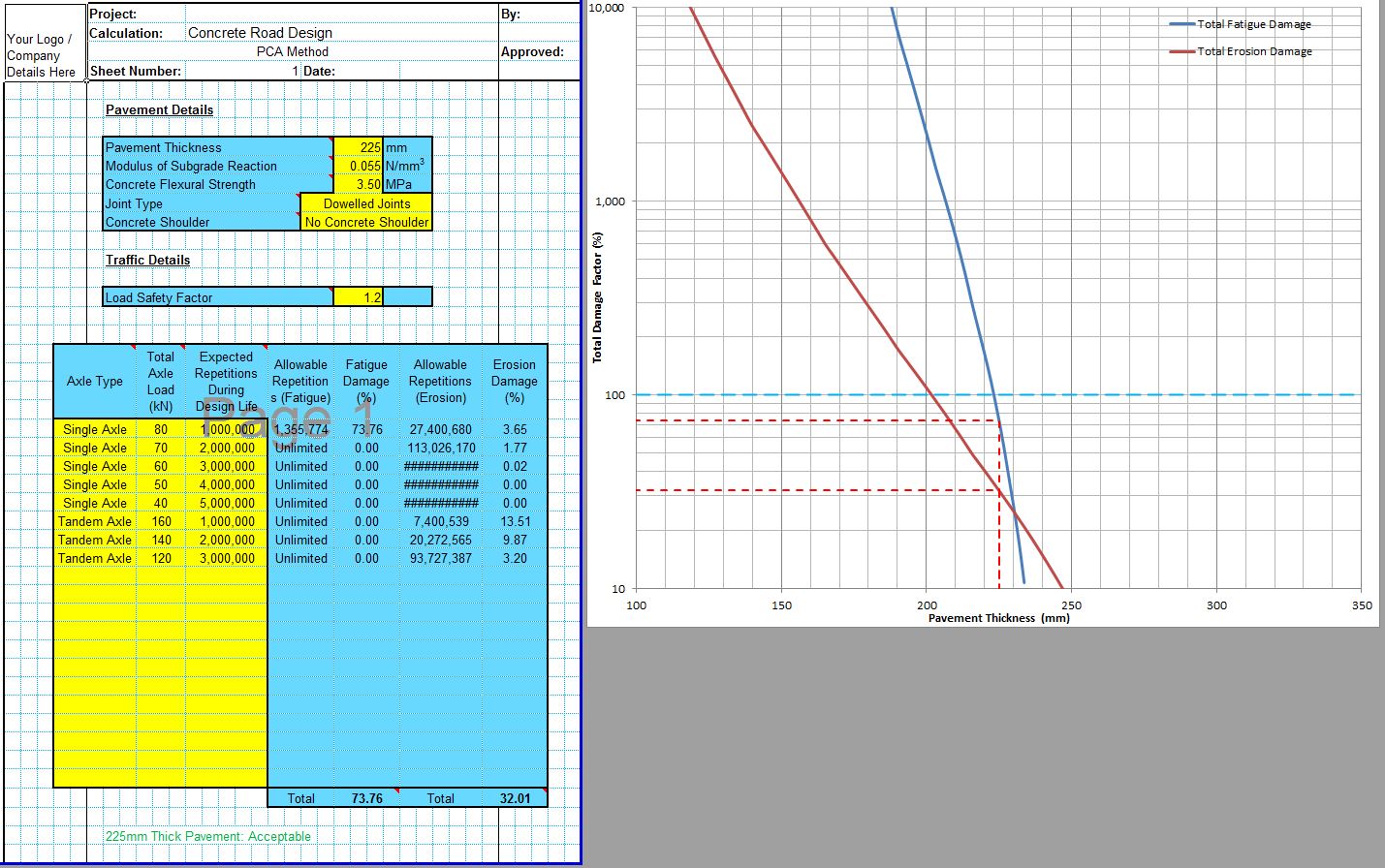Continuously reinforced concrete pavement design in the UK is undertaken in accordance with TRL Report 630. Continuously reinforced concrete pavement design (aka CRCP pavement design) is no longer undertaken in the same way as jointed concrete pavements. TRL 630 provides a methodology specifically for continuously reinforced concrete pavement design.
The CivilWeb Continuously Reinforced Concrete Pavement Design Spreadsheet allows the designer to complete concrete continuously reinforced concrete pavement designs in accordance with TRL Report 630 in seconds. Plus our unique design tools allow the designer to see at a glance exactly where the design can be optimised, saving time on iterative design approaches.
The CivilWeb Continuously Reinforced Concrete Pavement Design Spreadsheet is available for purchase at the bottom of this page for just £10. Alternatively spreadsheet is included in the CivilWeb Rigid Pavement Design Spreadsheet Suite which includes 11 different pavement design methods along with a number of other useful design tools including concrete flexural strength calculators. Follow the above link for full details.
TRL Report 630 – Continuously Reinforced Concrete Pavement Design
While jointed concrete pavements are being phased out in the UK due to noise and maintenance issues, continuously reinforced concrete pavements are still regarded as an option for highway works. This is because continuously reinforced concrete pavements are designed for much smaller cracks at closer centres, they are much better suited to asphalt overlays. This can produce a pavement with the noise, ride and maintenance characteristics of asphalt pavements with a strong concrete base. This is much easier to rehabilitate or upgrade with additional surfacing than a jointed concrete pavement.
TRL 630 Design Method
Continuously reinforced concrete pavements were previously designed in the same manner as jointed concrete pavements using the TRL 87 model but with more reinforcing steel. This method was updated in 2005 with the publication of TRL 630 – New Continuously Reinforced Concrete Pavement Designs.
TRL 630 updated a number of the design parameters from those used in TRL 87. The concrete compressive strength parameter was altered to flexural strength which is much more important for the performance of concrete pavements than the compressive strength. It also removed the area of reinforcement from the design equation. This is because the steel content must only be sufficient to hold the cracks together. Any further steel content will not significantly improve the performance of the slab.
Continuously Reinforced Concrete Pavement Design Equations
The following equation is now used in the UK for continuously reinforced concrete road design where H1 is the slab thickness, T is the traffic loading, ff is the mean concrete flexural strength at 28 days and M is the equivalent foundation modulus. Similar to the TRL 87 method this assumes that there is no concrete shoulder. The same adjustment can be made for concrete slabs which do have concrete shoulders.
These continuously reinforced concrete pavement design equations are also shown in graphs for three typical foundation moduli as shown below. The new continuously reinforced concrete pavement design equation was also converted into a nomograph for use on highways in HD26/06.
CivilWeb Continuously Reinforced Concrete Pavement Design Spreadsheet
The CivilWeb Continuously Reinforced Concrete Pavement Design Spreadsheet completes the thickness design for the proposed pavement instantly using only a handful of inputs. This allows the designer to complete a fully TRL 630 compliant design in seconds.
The spreadsheet also includes unique design tools showing the thickness results for alternative traffic loads, concrete strengths and subgrade strengths. This allows the designer to see at a glance whether the design can be optimised.
Buy now for only £10
Or why not buy our full Rigid Pavement Design suite for only £20
Or buy our best value bundle, the full Pavement Design Suite including flexible and rigid pavement spreadsheets for only £30
Download Free Trial Version
To try out a fully functional free trail version of this software, please enter your email address below to sign up to our newsletter.
